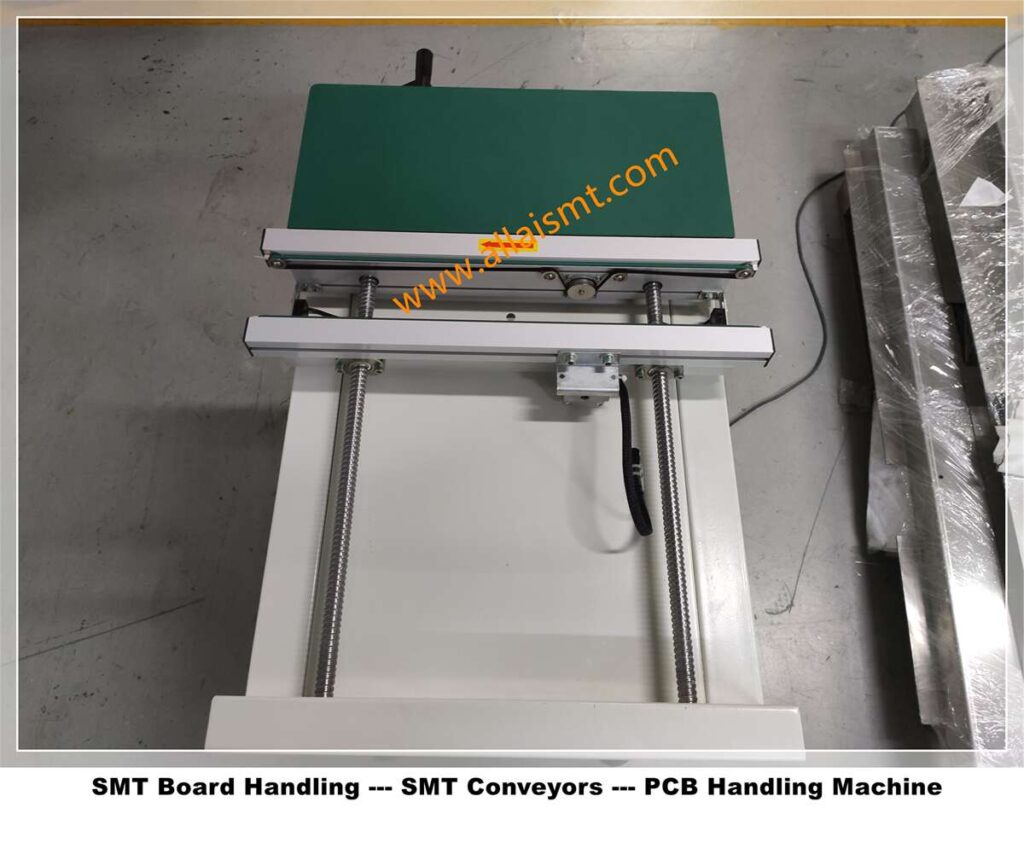Haisi series Hi3536 is a professional high-end SoC chip developed for multi-channel HD or multi-channel D1 NVR products. Hi3536 has a built-in high-performance A17 processor and a multi-protocol video decoding engine with up to 16 channels of 1080p decoding capability. It integrates a high-performance video/image processing engine with multiple complex image processing algorithms, and provides excellent image quality for customers’ products by combining two-channel high-definition display output capability. Hi3536 integrates a wealth of peripheral interfaces, providing customers with differentiated product functions, performance and image quality requirements, while greatly reducing ebom costs.
Technical characteristics of Hi3536i
Processor ARM Cortex A17 Quad Core @Max. 1.4GHz
− 32KB L1 I-Cache,32KB L1 D-Cache
− 1MB L2 Cache
The main control processor is used to run peripheral drivers and application programs ARM Cortex A7 single core @ max.900mhz.
− 128KB L2 Cache
Used for the control of video related modules
Video decoding standard
H.265MainProfileLevel5.1 decoding
H.264 Baseline/Main/Highprofile Level 5.0 Decoding MPEG4SPL0~L3/ASPL0~L5 Decoding
MJPEG/JPEGBaseline decoding
Video coding standard
H.264 baseline/main/highprofilelevel 5.1 coding
MJPEG/JPEGBaseline coding
Video codec processing H.265/H.264&JPEG multi-stream codec performance
X4k * 2k (3840 * 2160) @ 30fps H.265/H.264 decoding +2x1080p@30fps H.264 encoding+4x4K*2K@2fpsJPEG encoding
16x1080p @ 30fps H.265/H.264 decoding +2x1080p@30fps H.264 encoding+16x1080p@2fpsJPEG encoding
X1080p @ 30fps H.265/H.264 decoding+4Kx2K@30fpsH.264 encoding+9x1080p@2fps JPEG encoding
32x720p @ 30fps H.265/H.264 decoding+4x720p@30fpsH.264 encoding+32x720p@2fps JPEG encoding
4xd1 @ 30fps H.265/H.264 decoding+8xD1@30fpsH.264 encoding+64xD1@2fps JPEG encoding
X720p @ 30fps JPEG decoding CBR/VBR code rate control, 16Kbit/s~40Mbit/s coding frame rate supports 1 fps~60fps, ROI coding supports color-to-gray coding.
Integrated GPU Mali-T720GPU supports OpenGLES3.1/2.0/1.1, OpenCL1.2/1.1/1.0 triangle filling rate up to 63MTris/s, double-precision FP64 and anti-aliasing function
Intelligent video analysis
Integrated IVE2.0 intelligent analysis acceleration engine, supporting a variety of intelligent analysis applications.
Motion detection
Video diagnosis
perimeter guard
And video graphics processing
Support 3D denoising, de-interlace, edge smoothing, dynamic contrast enhancement and sharpening.
Support anti-flicker processing of video and graphic output.
Support video 1/8~16x scaling
Support 1/2~2x scaling of graphics
Support 4 occlusion areas
Support OSD superposition of 8 areas
Video interface
Video input interface
1 BT.1120 HD input interface is supported
Support a video input channel, which can be used for two-chip cascade.
SDR and DDR modes are supported.
In SDR mode, the maximum input value is 1080P@60fps.
You can input up to 3840 x2160@30fps in DDR mode.
Video output interface
1 HDMI 2.0 Ultra HD output interface is supported, and the maximum output is 3840 x2160@60fps.
1 VGA HD output interface is supported, and the maximum output is 2560 x1600@60fps.
It supports one BT.1120 HD output interface, which can output 1080P@60fps in SDR mode and 3840 x2160@30fps in DDR mode.
Two independent HD output channels (DHD0, DHD1) are supported, which can be output through any HD interface (HDMI, VGA, BT.1120).
Dh0 supports 64 picture output, and the maximum output is 3840×2160@60fps.
Dhd1 supports 32-picture output, and the maximum output is 1080P@60fps.
Support 1 CVBS SD output interface
Support three full-screen GUI graphics layers of RGB1555 or RGB8888, which are used for 2-channel HD and 1-channel signpost respectively.
Two hardware mouse layers are supported, with configurable formats of RGB1555, RGB4444 and RGB8888, and the maximum resolution is 256x 256.
audio interface
1 integrated Audiocodec
Supports 3 unidirectional I2S/PCM interfaces
1 input, supporting 16 multiplexed inputs.
2 outputs
Support 16bit voice input and output
network interface
Support 2 Gigabit Ethernet interfaces
RGMII, RMII and MII interface modes are supported, and 10/100Mbit/s half-duplex or full-duplex is supported.
1000Mbit/s full duplex is supported
Support TOE to reduce CPU overhead
Safety engine
Implement hardware AES/DES/3DES encryption and decryption algorithm
Implement hardware HASH digest algorithm
RAID acceleration engine
XOR acceleration is supported
XOR supports up to 9 data sources.
DMA function is supported, and the maximum data block is 16MB.
Memory initialization is supported, and the initial value can be matched.
Support description sub-linked list
Peripheral interface
Two SATA3.0 interfaces
Support PM function
Support eSATA
1 PCIe2.0/SATA3.0 multiplex interface
It can be configured as 1*PCIe x2, 1*PCIe x1+1*SATA or 2*SATA.
When used in PCIe 2.0 interface, RC and EP functions are supported.
ESATA and PM are supported when used for SATA 3.0 interface.
Two USB 2.0 HOST interfaces, supporting Hub function
1 USB 3.0 HOST interface, which supports Hub function
Two SDIO interfaces
Sdio 0 supports SD card (SD 2.0), SDIO 2.0 and MMC 4.4.1.
Sdio1 supports SD card (SD 2.0), SDIO 2.0, MMC 4.4.1 and emmc4.5.
SDXC card is supported (only 3.3V mode is supported)
Sdio0 is multiplexed with BT.1120 output pins.
Sdio1 and NANDFlash interface pin multiplexing
UART interfaces, 2 of which support 4 wires and 1 IR interface.
1 I2C interface is supported
Support multiple GPIO interfaces
1 low-speed ADC interface is supported
Memory interface
Two 32bitDDR3/4SDRAM interfaces
The highest frequency is 933MHz(1.866Gbps)
Support dual channels
Support ODT function
Maximum capacity supports 3GB.
SPINOR/NANDFlash interface
− 1、2、4bitSPINOR/NANDFlash
Two film selections
(NOR flash only) The maximum capacity supported by each chip selection is 32MByte.
(NAND flash only) The maximum capacity supported by each chip is 8GByte.
(NAND flash only) 2kb/4kb pagesize
(NAND flash only) 8bit/1Kbyte ECC and 24bit/1Kbyte ECC are supported.
NANDFlash interface
Support 8bit NAND Flash
Two film selections
Support SLC, MLC
Support 8/24/40/64bit ECC (based on 1Kbyte data block)
Built-in 64KBbootROM and 88KBSRAM
Independent power supply RTC
RTC can be independently powered by battery.
Start mode
Support booting from bootROM
Enable booting from SPINORFlash.
Enable booting from SPINANDFlash.
Enable booting from NANDFlash
Enable booting from eMMC
PCIe slave boot is supported
SDK
Provide Linux3.10-based development package.
Provide audio codec library with multiple protocols
Provide high-performance PC decoding library of H.265/H.264
Chip physical specification
power consumption
4.3W Typical Power Consumption
Support multi-level power control
operating voltage
Core voltage is 0.9V
The voltage of CPU is 1.0V (it can be reduced to 0.9v) and the voltage of IO is 3.3V
The interface voltage of DDR 3/4 SDRAM is 1.5/1.2V
seal and package
− RoHS,EDHS-PBGA
Pin spacing: 0.8mm
2 mm x 27 mm package size
Operating temperature: 0 ~ 70 C

